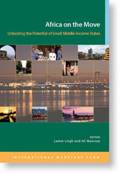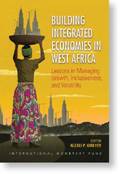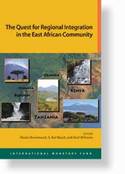动态1: ILO Knowledge Centre New publications
Social protection
International Conference on Strengthening Social Protection for ASEAN Community, 8-9 July 2014, Centara Grand at Central Plaza Ladprao, Bangkok, Thailand / Social Security Office, Ministry of Labour, Thailand ; International Conference on Strengthening Social Protection for ASEAN Community, 2014, Bangkok, Thailand. Bangkok : The Office, [2015]. (Call no. 368.4 In61ie 2014)
The state of social protection in ASEAN at the dawn of integration / Cheng Boon Ong and Celine Peyron Bista ; ILO Regional Office for Asia and the Pacific. Bangkok : ILO, 2015. (Call no. 368.4 On58s) - Download here
Economic development
Statistik Indonesia = statistical yearbook of Indonesia 2015 / Statistics Indonesia. Jakarta : Statistics Indonesia, 2015. (Call no. IDN 310 In41s 2015)
Labour law
Labour law in Hong Kong / Ng Sek Hong. 2nd ed. Alphen aan den Rijn, The Netherlands : Kluwer Law International, 2015. (Call no. HKG 344.01 Ng576l 2015)
Labor laws of the Republic of Korea / Ji-Hyung Kim ... [et al.]. Seoul : Hollym, 2015. (Call no. KOR R 344.01 La123)
Marketing
How brands grow : what marketers don't know / Byron Sharp. Victoria : Oxford University Press, 2010. (Call no. 658.83 Sh531h)
Productivity
APO productivity databook 2015 / Asian Productivity Organization. Tokyo : APO, 2015. (Call no. 331.118 As382a 2015)
Labour market
Report of the labor force survey : whole kingdom, Quarter 3 : July-September 2015 / Thailand, National Statistical Office. Bangkok : The Office, 2015. (Call no. THA 310.331 Th364r Jul-Sep 2015)
Trade and employment in Asia / edited by Niny Khor and Devashish Mitra. Oxfordshire : Routledge, 2013. (Call no. 331.12095 Tr763)
Labour and employment
Earnings differentials between formal and informal employment in Thailand / Sukti Dasgupta, Ruttiya Bhula-or and Tiraphap Fakthong ; ILO Regional Office for Asia and the Pacific. Bangkok : ILO, 2015. (ILO Asia-Pacific working paper series). - Download here
Home-based workers : decent work and social protection through organization and empowerment ; experiences, good practices and lessons from home-based workers and their organizations / Nelien Haspels and Aya Matsuura ; ILO Country Office for Indonesia and Timor-Leste, Programme on Empowering Indonesian Women for Poverty Reduction (MAMPU). Jakarta : ILO, 2015. (Call no. IDN 331.2567 Ha352h)
Occupational qualification and skill
Regional Model Competency Standards : core competencies / Regional Skills Programme, ILO Regional Office for Asia and the Pacific. Bangkok : ILO, 2015. (Call no. 331.2592 In61ro) - Download here
Population
The state of world population 2015 / United Nations Population Fund. New York : UNFPA, 2015. (Call no. 301.32 Un58s 2015)
Migration
Analytical report on the international labour migration statistics database in ASEAN : improving data collection for evidence-based policy-making / Tripartite Action for the Protection and Promotion of the Rights of Migrant Workers in the ASEAN Region (ASEAN TRIANGLE project), ILO Regional Office for Asia and the Pacific. Bangkok : ILO, 2015. (Call no. 331.54 In61an) - Download here
International labour migration statistics : a guide for policymakers and statistics organizations in the Pacific / Sophia Kagan, Jillian Campbell ; ILO Country Office for Pacific Island Countries. Suva : ILO, 2015. (Call no. 331.54 Ka11i)
International migration outlook 2015 / OECD. Paris : OECD, 2015. (Call no. 331.54 Or68t 2015)
Industrial enterprise
Factory directory in Thailand 2016-17 . Bangkok : s.n. 2015. (Call no. THA 338.025 Fa142 2016-17)
Financing
Remittance services in the Republic of Korea / Don Kwan Kang and Lee Kyu-Yong ; International Labour Office, ILO Regional Office for Asia and the Pacific. Bagnkok : ILO, 2014. (Call no. 331.34 Ka16r) - Download here
Wages
Wages in China : an economic analysis / edited by Zhang Jun. Honolulu, HI : Enrich Professional Publishing, 2016. (Call no. CHN 331.21 Wa131 v.1-3)
动态2:FAO New publications
Achieving Zero Hunger:The Critical Role of Investments in Social Protection and Agriculture
Eradicating world hunger sustainably by 2030 will require an estimated additional $267 billion per year on average for investments in rural and urban areas and in social protection, so poor people have access to food and can improve their livelihoods, a new UN report says. This would average $160 annually for each person living in extreme poverty over the 15 year period. Prepared by FAO, the International Fund for Agriculture Development (IFAD) and the World Food Programme (WFP), the report, which was presented in Rome, comes ahead of the Third International Conference on Financing for Development in Addis Ababa, Ethiopia on 13 - 16 July 2015. The report notes that despite the progress made in recent decades, today nearly 800 million people, most of them in rural areas, still do not have enough food to eat. Eliminating chronic undernourishment by 2030 is a key element of the proposed Sustainable Development Goal 2 of the new post-2015 agenda to be adopted by the international community later this year and is also at the heart of the Zero Hunger Challenge promoted by the UN Secretary-General.
English Version Download link: www.fao.org/3/a-i4951e.pdf
The guidelines take account of the characteristics of different genetic resources for food and agriculture which face different challenges and opportunities in respect to climate change. The objectives of the guidelines are to promote the use of genetic resources for food and agriculture in climate change adaptation and support their integration into national climate change adaptation planning; to support the genetic resources experts and those involved in climate change adaptation to identify and address the challenges and opportunities of genetic resources for food and agriculture in adaptation; and to promote the involvement of genetic resources stakeholders in the national climate change adaptation planning process. The guidelines follow the structure and approach of the technical guidelines for the National Adaptation Plan process prepared by the Least Developed Countries Expert Group of the United Nations Framework Convention on Climate Change. The process involves four main elements in each of which a number of steps are proposed.
2. The Second Report on the State of the World’s Animal Genetic Resources for Food and Agriculture In Brief
This summary of the global assessment has been requested by the Commission on Genetic Resources for Food and Agriculture (see report: http://www.fao.org/3/a-mm660e.pdf; para 38). Sustainable management of the world’s livestock genetic diversity is of vital importance to agriculture, food production, rural development and the environment. The Second Report on the State of the World’s Animal Genetic Resources for Food and Agriculture is an update of the first report and present a global assessment of these resources. Drawing on 129 country reports, it presents an analysis of the state of livestock diversity, the influence of livestock-sector trends on the management of animal genetic resources, the state of capacity to manage animal genetic resources, including legal and policy.
English Version Download link:www.fao.org/3/a-i5077e.pdf
3. Mapping the Vulnerability of Mountain Peoples to Food Insecurity
Mapping the vulnerability of mountain peoples to food insecurity found that the number of food insecure people living in mountain regions in developing countries grew to nearly 329 million in 2012, up from 253 million in 2000, even though the overall population of the world's mountain peoples increased only by 16 percent during that same time. That means that one in three mountain people, both urban and rural, in developing countries faced hunger and malnutrition, compared to one out of nine people globally. And focusing on only rural mountain populations, which depend on natural resources such as land, water and forests for their livelihoods, the numbers get even starker: almost half of them are food insecure.
English Version Download link:www.fao.org/3/a-bc284e.pdf
动态3: ADB New publication
Featured titles
1. ROADMAP FOR CARBON CAPTURE AND STORAGE DEMONSTRATION AND DEPLOYMENT IN THE PEOPLE'S REPUBLIC OF CHINA
Carbon capture and storage technology - collecting carbon emissions from coal-powered power plants and industrial facilities and storing them underground - is vital for combating climate change. Yet high installation costs have deterred its use around the world. China plans to solve the cost problem with a rapid, large-scale uptake and commercialization of the technology. The results may change the way we think about fossil fuels to power a nation's growth.
2. ASIAN ECONOMIC INTEGRATION REPORT 2015: HOW CAN SPECIAL ECONOMIC ZONES CATALYZE ECONOMIC DEVELOPMENT?
Asia emerged as an important source of outward foreign direct investment, growing 45.3% in 2014 compared with 2010, led by both the region's high income and emerging market economies. Read this report for the latest insights on trade, finance, and the role of Special Economic Zones as a development strategy in the region.
3. BALANCING THE BURDEN? DESK REVIEW OF WOMEN'S TIME POVERTY AND INFRASTRUCTURE IN ASIA AND THE PACIFIC
All over the world, women work more hours than men; men spend more time in paid work, whereas women bear the burden of unpaid work. Time poverty limits women's contribution toward economic growth and perpetuates gender inequalities across generations. Basic infrastructure - such as piped water supply at home saves women time fetching water - can reduce women's time poverty but is it enough in itself?
动态4:IMF Publications News : Asia’s Advancing Role in the Global Economy
I. Building on Recent Gains
Asia’s rapid integration into the world economy has been one of the most striking global developments of the last generation. In that relatively short time, many countries across this vast and diverse region have achieved economic “miracles,” and several have become powerhouses of the global economy.
For the past 25 years—the Asian crisis notwithstanding—the region’s economy has grown by around 6 percent a year. In the aftermath of the recent global financial crisis, Asia was a rare bright spot.
This economic transformation has supported social development. Over the past 35 years, this region has been the world’s leader in reducing poverty.2 Education and health outcomes have improved significantly. People’s living standards have been raised.
II. Global Economic Challenges and Asia’s Response
Indeed, the global economy faces many challenges: volatile markets and capital flows; economic transitions and financial tightening in many countries; the large drop in commodity prices, including oil; and escalated geopolitical tensions.
What should be Asia’s response? Some of the broad areas for action are well-known:
- Supportive monetary policy—consistent with price and external stability objectives;
- Growth-friendly fiscal measures;
- Macro-prudential measures to safeguard financial stability.
The policy specifics, of course, vary across countries and according to circumstances. In all cases, however, it is safe to say that structural reforms are key—to boost competitiveness, growth, and jobs. To give a few examples:
- In China: improving the allocation of credit to help rebalance the economy away from debt-led investment.
- In Japan: tackling dual labor markets, liberalizing product markets, and reforming corporate governance.
- In India: enhancing the efficiency of product markets, encouraging private investment, and improving infrastructure.
- In many countries—from emerging markets to low-income nations—strengthening the business environment and developing bond markets.
Successfully dealing with these kinds of structural issues will not only support Asia’s near- and medium-term prospects, but also secure the foundations on which to unlock the region’s exciting future potential.
Asia and the IMF
Earlier this year, quota and governance reforms came into effect that enhance the representation of emerging Asian economies within our 188 member countries. One consequence is that India now joins China and Japan among the Fund’s top ten shareholders.
Also, late last year, the decision was taken to include the renminbi as the second Asian currency in the IMF’s SDR currency basket—joining the yen, of course.
Conclusion: Asia’s Global Leadership
This region’s dynamism presents a historic opportunity to invest now in the future—and to advance Asia.
Doing so will not only put Asia on the path to sustained growth, but also strengthen its role in the global economy—as a key contributor and as a leader for the 21st Century.
动态5: IMF Publications News
|

|
Africa on the Move
Small middle-income countries in sub-Saharan Africa have delivered impressive economic performance in the past few decades. The current challenge for these countries is how to consolidate these gains and make the move to high-income country and eventually advance-economy status. This book analyzes macroeconomic and structural issues facing small middle-income countries from the perspective of IMF staff and draws on input from country officials to offer a number of policy options for addressing these challenges and realizing future opportunities.
To read an excerpt.
For more information.
|
|

|
Building Integrated Economies in West Africa
The West African Economic and Monetary Union (WAEMU) has reached an important milestone in its development and now needs to advance to the next level by bringing its member countries closer to the status of emerging market economies. This book examines how the WAEMU can achieve its development and stability objectives, improve the livelihood of its citizens, and enhance the inclusiveness of its economic growth while preserving its financial stability, enhancing its competitiveness, and maintaining its current fixed exchange rates.
To read an excerpt .
For more information .
|
|

|
The Quest for Regional Integration in the East African Community
"This volume should be of great interest not just to scholars of macroeconomics in sub-Saharan Africa, but also to development macroeconomists more generally, as a case study in the challenges of currency unification among low-income countries."
- Peter Montiel, Williams College
For more information.
|









